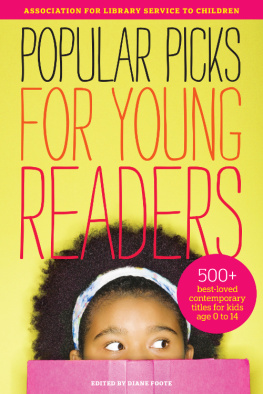Dear Reader:
The Childhood of Famous Americans series, seventy-five years old in 2007, chronicles the early years of famous American men and women in an accessible manner. Each book is faithful in spirit to the values and experiences that influenced the persons development. History is fleshed out with fictionalized details, and conversations have been added to make the stories come alive to todays reader, but every reasonable effort has been made to make the stories consistent with the events, ethics, and character of their subjects.
These books reaffirm the importance of our American heritage. We hope you learn to love the heroes and heroines who helped shape this great country. And by doing so, we hope you also develop a lasting love for the nation that gave them the opportunity to make their dreams come true. It will do the same for you.
Happy Reading!
The Editors
RAY CHARLES
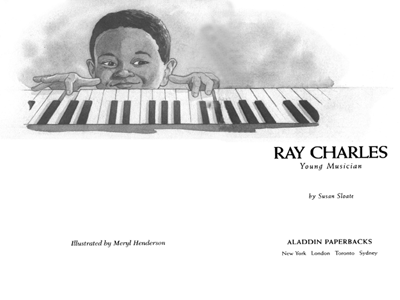
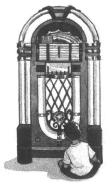
If you purchased this book without a cover, you should be aware that this book is stolen property. It was reported as unsold and destroyed to the publisher, and neither the author nor the publisher has received any payment for this stripped book.
This book is a work of fiction. Any references to historical events, real people, or real locales are used fictitiously. Other names, characters, places, and incidents are the product of the authors imagination, and any resemblance to actual events or locales or persons, living or dead, is entirely coincidental.

ALADDIN PAPERBACKS
An imprint of Simon & Schuster
Childrens Publishing Division
1230 Avenue of the Americas
New York, NY 10020
www.SimonandSchuster.com
Text copyright 2007 by Susan Sloate
Illustrations copyright 2007 by Meryl Henderson
All rights reserved, including the right of reproduction in whole or in part in any form.
ALADDIN PAPERBACKS, CHILDHOOD OF FAMOUS AMERICANS, and colophon are trademarks of Simon & Schuster, Inc.
Designed by Lisa Vega
The text of this book was set in New Caledonia.
Manufactured in the United States of America
First Aladdin Paperbacks edition January 2007
2 4 6 8 10 9 7 5 3 1
Library of Congress Control Number 2006926943
ISBN-13: 978-1-4169-1437-2
ISBN-10: 1-4169-1437-4
eISBN-13: 978-1-4391-0446-0
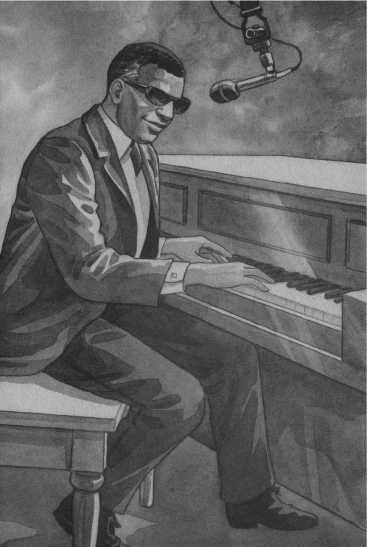
ILLUSTRATIONS
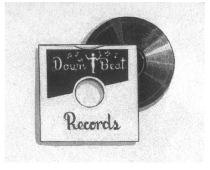
PAGE
Mr. Pit shows Ray how to play the piano. 7
Ray and George play while Mama works. 25
Ray tries to name the animals on Dr. McClouds chart. 37
Mama shows Ray how to count the steps to the front door. 51
Ray is able to chop wood, even though he can no longer see. 57
The other boys trick Ray into slamming into a post. 74
Miss Mallard teaches Ray to play the clarinet. 85
Ray shows off his new bicycle to his friends. 99
Ma Beck comforts Ray after Mamas death. 122
With a map and a piece of string, Gosady McGee helps Ray decide to move to Seattle. 134
Rays first big break came playing with the McSon Trio in Seattle. 142
Ray playing with his first band, the Ray Charles Band, and the Raeletts. 149
CONTENTS
RAY CHARLES
Musical Keys
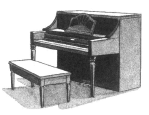
Ray Charles Robinson was born in Georgia, just north of the Florida border, on September 23, 1930. His mama was only about sixteen years old at the time. Rays father, Bailey, a tall, strapping man, worked on the local railroad. But he was hardly ever around, and Ray almost never saw him. He only visited once in a while.
Mama soon brought Ray to Greenville, Florida, looking for work. Rays mama did all kinds of work, like snapping beans and shelling peas. Mostly she did laundry, washing and ironing it for the towns white people. A year later, Rays little brother, George, was born.
The towns real name was Greenville, but most people who lived there, including little Ray and his mama, Retha, called it Greensville, with an s. Perched right on the border of Florida and Georgia, it was a deep southern country town, which meant hot, sticky summers; great southern food, like barbecued ribs and grits; and an understanding, in the early 1930s, that white folks lived in one part of town and black folks lived in another. That was just the way things were.
Little Ray thought his world was just fine. He had his little brother, George, for company, his mama and stepmother, Mary Jane, to raise him and love him, and his friend Mr. Pit to teach him about music.
Mama was very strict about both chores and manners. At the top of her list were two iron-clad rules: You do not beg and you do not steal. Ray and George knew she meant them.
One day Ray finished his chores quickly. Until he and George were through picking up chips for the fire, clearing up after lunch, and making the bed, they were not allowed to go anywhere. And Ray wanted to go someplace special today: He was going to visit Mr. Pit.
Ray wiped the last of the dishes from lunch. He looked over the last plate carefully to be sure it was dry, and set it atop a stack near the sink. He hung the towel carefully over the counter to dry. Now he could go.
Outside in the yard, George, who was a year younger than Ray, looked up hopefully as Ray came through the door. He wanted to play with Ray; he had a tiny frog in his hand. He opened his hand to show it, but Ray shook his head. Not today, George. I got somewhere to go.
George was a good playmate, and Ray usually liked to play with him, but when he visited Mr. Pit, he went alone.
Ray ran to the Red Wing Caf, just a few buildings down the road. As usual he was barefoot. He and George never wore shoes. Black people in Greenville mostly didnt own shoes, and they didnt mind, either. The weather was usually warm, and their feet were used to the dirt roads. In the hot summers, they walked on the cool grass, not the blazing hot roads. Ray didnt even think about his feet today, squishing along happily in the mud from last nights rain. He just hoped Mr. Pit would be waiting for him.
The Red Wing Caf was the center of life in Greenville for black folks. It was a general store, which sold food and all kinds of necessities. They also rented out a few rooms in the back if you needed a place to sleep. At night lots of people went there to dance and talk. But in the hot, sleepy summer afternoons, when just a few people came in to buy beer and ice cream, it was quiet. That was when Ray visited his best friend.
Mr. Pits real name was Mr. Wylie Pitman, and he owned the Red Wing Caf. Ray, though, always called him Mr. Pit. There were two things a the caf that just fascinated Ray: a jukebox and a battered, old upright piano.
The jukebox was a machine that had records stored in it. On the outside were labeled buttons, each listing a song. When you dropped in a nickel and pushed the right button, the song you wanted to hear would play. Ray just loved that jukebox. It was stuffed full of good country-western songs, some boogie-woogie, some big band, and some jazz. Ray didnt care what it played. He sat, a chubby four-year-old, between the big speakers that boomed out the music. He soaked in every note, every word, eyes closed, humming or singing along, and rocked his little body from side to side.





